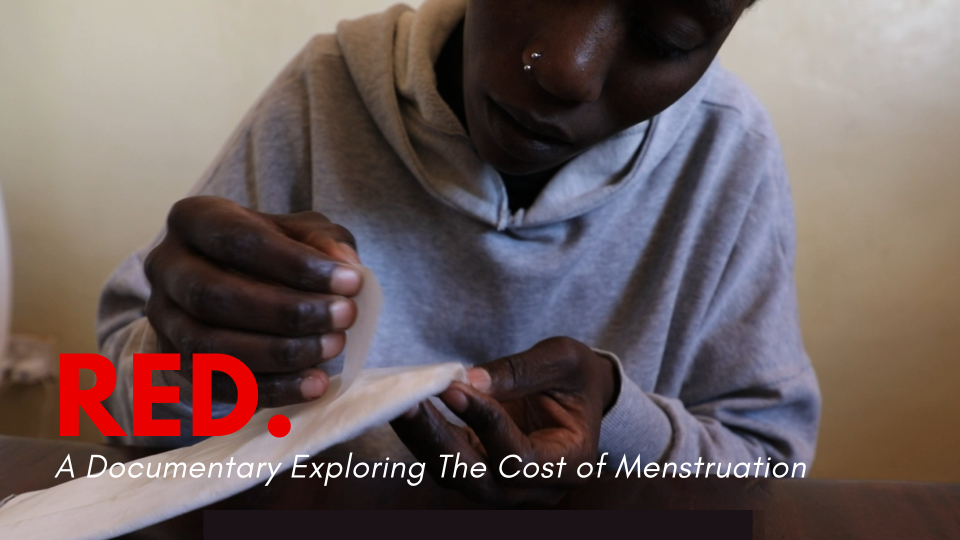
The world’s population currently stands at 8 Billion with a world count of slightly more men (50.3 per cent) than women (49.7 per cent) in 2022. What this means is that 49.7% of the population have gone through menstruation, are going through menstruation, or are yet to receive their first menstruation.
Most girls get their first period when they're between 10 and 15 years old with an average age of 12 but this varies from girl to girl.
On average a woman menstruates for about 7 years during their lifetime. With this comes a “life- time financial commitment” to purchase of menstrual products and care.
The World Bank estimates that 500 million women and girls globally lack access to adequate facilities for menstrual hygiene management. Even for women who do not experience period poverty, high-quality feminine hygiene products often also come with a high sticker price. The gross margin on feminine hygiene products can be as high as 70%.
So, what is period poverty?
This is the financial struggle women and girls face in order to afford menstrual products and care. This is a struggle experienced in both developed and developing countries.
Due to period poverty, there have been cases where some girls have engaged in sex for pads transactions and others have shared sanitary products and this exposes them to unimaginable exposure to health risks. Some use rags and mattress stuffing while others use cotton and scraps of fabric.
One of the most difficult realities about Period Poverty is the effect it has on the girl-child education. A lot of girls skip school when they are on their periods this is due to the high cost of menstrual products in addition to social and cultural stigmas, misinformation, and gender discrimination around periods.
In the UK, it is estimated that more than 137,700 girls missed school in 2021 because they can’t afford sanitary products. A recent survey by Plan International UK found more than a third of girls aged 14-21 in the UK have struggled to afford or access menstrual products during the pandemic.
In the US, 16.9 million people who menstruate are living in poverty. Two-thirds of the 16.9 million low-income women in the US could not afford menstrual products. While in New Zealand, a 2020 survey found that more than 90,000 school-age girls stay home from school because they can’t afford menstrual products - around one in 12.
Let’s bring it back home, a UNESCO report estimates that one in 10 girls in Sub-Saharan Africa misses school during their period.
Data from the Ministry of Education, Kenya indicates that a girl that is absent from school for four days in 28 days (month) loses 13 learning days, equivalent to two weeks of learning in every school term. In an academic year (nine months) a girl loses 39 learning days equivalent to six weeks of learning time. A girl in primary school between grades 6 and 8 (three years) loses 18 learning weeks out of 108 weeks. Within the four years of high school a girl can lose 156 learning days equivalent to almost 24 weeks out of 144 weeks of learning.
So what is the one factor leading to the high cost of menstrual products?
TAX. Tampon Tax, Period Tax
The average person who menstruates spends about $1,773 on period products in their lifetime. This is a fee that can be reduced if the tax implication on menstrual products was removed.
Kenya became the first country in the world to drop taxes on imports of sanitary products for women and girls and in 2016 the Treasury removed the duty charged on raw materials used for manufacture of sanitary towels.
So how are organizations and companies in Kenya working towards ending period poverty?
Companies are now producing locally made sanitary products ranging from re-usable pads and one-use pads.
Companies such as Nyungu AfriKa whose menstrual products are made from underutilized agricultural waste; pineapple leaves and corn husks and Eco-Bana whose biodegradable sanitary pads use banana fibre are also revolutionizing the menstrual products industry with eco-friendly products which are playing a key part in waste management.
Organizations such as Inua Dada who are producing Sanitary Pads in collaboration with the Pad Project and distribute them to girls and women in need, and Bank on Me whose mission is to empower girls, keep them in school and keep them away from having to engage in transactional sex in order to afford sanitary towels.
- 692 views






Add new comment